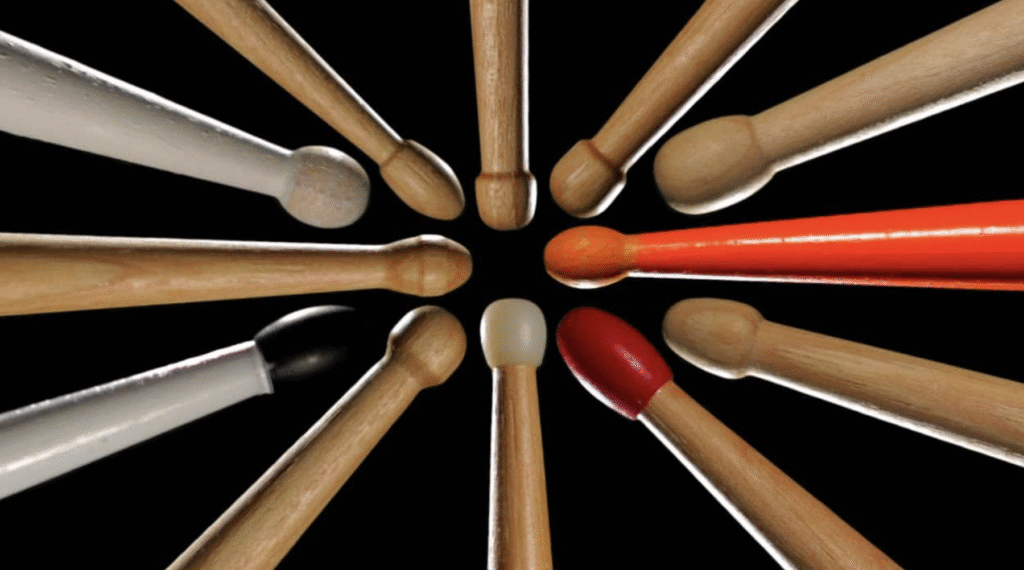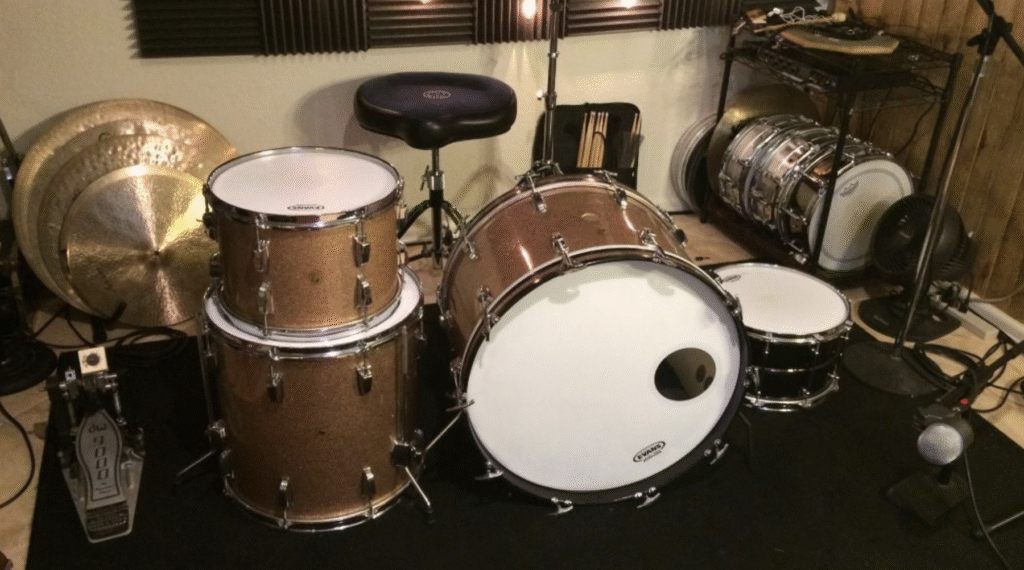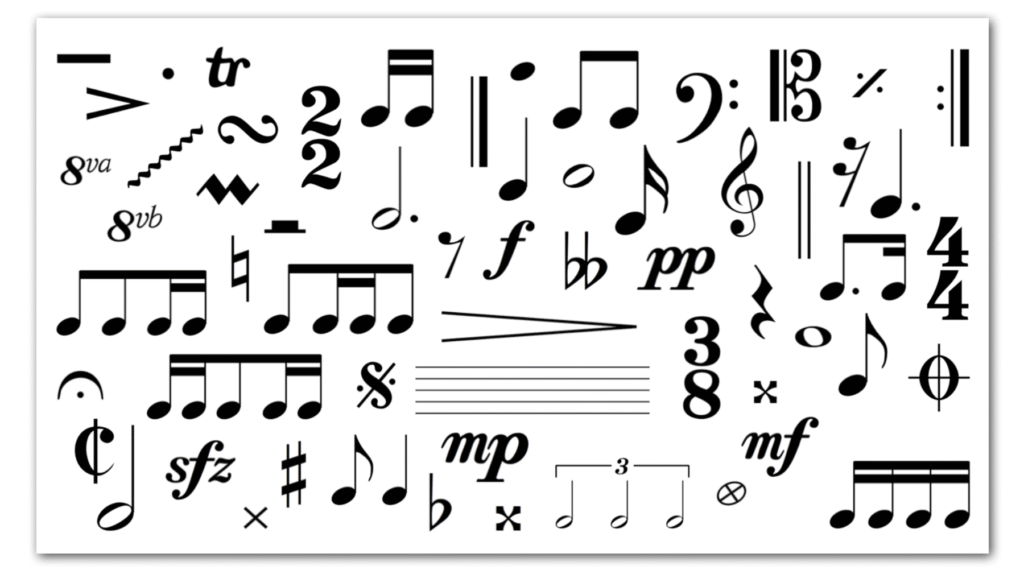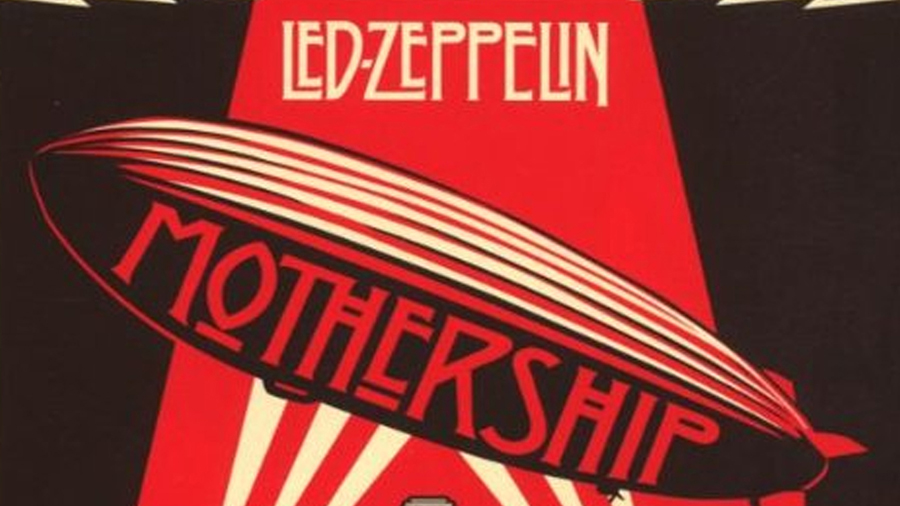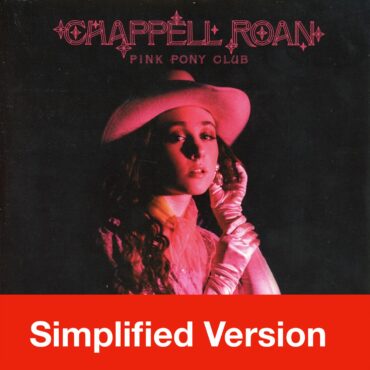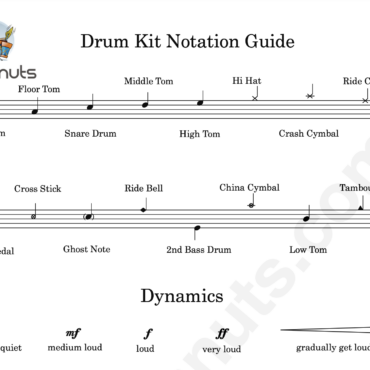How to Choose Drumsticks
Without drumsticks, drums just aren’t as much fun! What you choose to hit the drums with can also have a big influence on how you play the drums and the sounds that you produce. Drumsticks come in a wide range of weights, lengths and styles. In this guide we will look at the different choices you have and give you some advice on things to remember when choosing your sticks.
Choosing The Right Drumstick
Your drumstick is the connection between you and your instrument. Choosing the right the right weight, length or style of drumstick will influence your ability to express yourself on the drums. Just try playing Back in Black by ACDC with a pair of knitting needles and you’ll see what we mean! Here’s a few tips to help you choose the right drumstick.
- Try out drumsticks before you buy them. Drumsticks can be slightly different in shape and weight. You’ll need to find two that ‘feel’ right together. Most shops will let you hold the sticks and try them on a practice pad.
- Choose drumsticks that feel good in your hands- not too heavy, not too light. Try different weights. A good starting point for student drummers is 5A drumsticks. If your hands are smaller then you may want to try a lighter stick.
- Roll the drumsticks on a flat surface like a table or glass counter. This will show very clearly if the sticks are perfectly straight. Drumsticks are made of wood and sometimes they can be slightly warped, this can affect your playing.
- Don’t choose drumsticks because they’ve got your favourite drummer’s name on them. These are called Signature Sticks and are replicas of a famous drummer’s drumstick. This is the stick that suits their hands and style of music- not always yours.
Drum sticks come in various sizes, materials, and designs. Understanding these differences helps you make an informed choice. Let’s explore the key factors to consider when selecting your ideal drum sticks.
Understanding Drumstick Sizes
Drumsticks are labeled with numbers and letters, indicating their size and intended use. Generally, the number refers to the stick’s diameter—the lower the number, the thicker the stick. The letter denotes the application.
- 7A: Thin and light, suitable for jazz and softer styles.
-
5A: A versatile choice for various types of music.
-
5B: Thicker than 5A, ideal for rock and heavier playing.
-
2B: The thickest, offering maximum power for loud performances.
Selecting the right size depends on your playing style and the music genre. For instance, jazz drummers often prefer 7A sticks for their light touch, while rock drummers might opt for 5B or 2B sticks to achieve a more powerful sound.
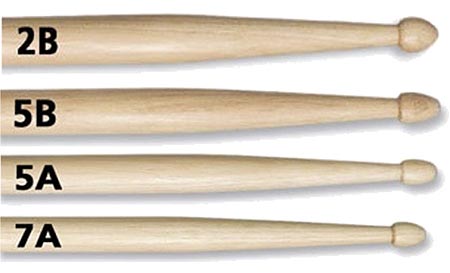
Choosing the Right Wood Type
Drumsticks are commonly made from three types of wood:
- Hickory: The most popular choice, offering a good balance of strength and flexibility.
-
Maple: Lighter than hickory, providing faster playing and less fatigue.
-
Oak: Denser and more durable, suitable for heavy hitters.
Your choice of wood affects the stick’s weight and durability. For example, maple sticks are excellent for fast, intricate playing, while oak sticks withstand aggressive drumming.
Exploring Tip Shapes and Materials
The tip shape influences the sound produced on drums and cymbals. Common tip shapes include:
-
Oval: Offers a warm, balanced tone.
-
Acorn: Provides a full, rich sound.
-
Barrel: Delivers a punchy, articulate response.
-
Ball: Produces a bright, clear tone.
Tips are made from wood or nylon. Wood tips offer a natural, warm sound, while nylon tips produce a brighter tone and are more durable, especially for cymbal work.

Considering Stick Length and Taper
Stick length affects reach and leverage. Longer sticks provide extended reach, beneficial for large drum kits. Shorter sticks offer better control and are suitable for tight setups.
The taper—the gradual decrease in stick diameter towards the tip—affects balance and response.
-
Long taper: Offers more flex and faster response.
-
Short taper: Provides more power and durability.
Choosing the right combination of length and taper enhances your playing comfort and technique.
Matching Sticks to Your Playing Style
Your drumming style and genre influence the ideal stick choice.
-
Jazz: Opt for lighter sticks (e.g., 7A) with small tips for subtle dynamics.
-
Rock: Choose thicker sticks (e.g., 5B) for power and volume.
-
Metal: Consider heavy sticks (e.g., 2B) for durability and impact.
-
Pop/Funk: Medium sticks (e.g., 5A) offer versatility and balance.
Experimenting with different sticks helps you find the perfect match for your playing needs.
Parts of the Drumstick
When you are learning How to Choose Drumsticks it’s important to get to know the parts of the drumstick.
- The tip (or bead) of the stick is the primary point for hitting the drum or cymbal.
- The Shoulder of the stick is often used for hitting the crash cymbal or for sounding rim shots on the drums.
- The Shaft of the stick is where we hold the stick.
- The Butt of the drum stick is sometimes used for ‘clicking’ on the rim of the snare drum.

Brushes
Brushes are often associated with Jazz drumming as they were made popular during the Jazz era of the early 20th Century. Most brushes are made of a series of wires (or sometimes plastic) joined to a solid handle. Some types have retractable handles where the wires can be pulled back into the handle. By dragging, tapping and flicking the skins and cymbals they produce a truely unique sound.
For an example of Brushes in action check out the master Buddy Rich performing “Brush Strokes”
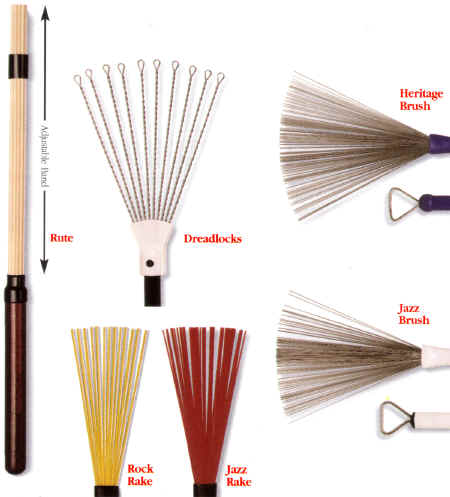
Synthetic Sticks
Drumsticks can also be made from plastics, carbon fibre, and even metal. Depending on the material, the sound, weight, and durability of the stick will vary. Therefore, the best idea when choosing a stick is to try it out first. After all, if it doesn’t feel good in your hands, it won’t matter how durable it is.

Blastix and Multi Rods
Blastix can also be known as Multi Rods or Hot Rods. In fact, all these names refer to a series of small wooden or plastic rods bound into one larger stick. Additionally, Multi Rods are great for practice since they are much quieter than regular sticks. They also produce a unique sound on the drums—something between a stick and a brush. Because of this, they give you another way to create different sounds on your drum kit. As a result, you’ll have more voices to express yourself while making music.
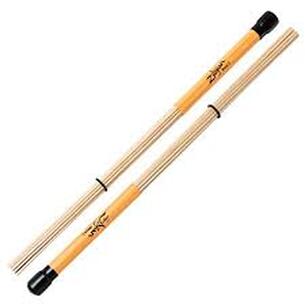
Testing and Personal Preference
Ultimately, personal preference plays a significant role in choosing drumsticks. Visiting a music store to test various sticks can provide valuable insights. Pay attention to how each stick feels in your hand, its balance, and the sound it produces.
Remember, the right stick enhances your performance and comfort. Don’t hesitate to try different options until you find the perfect pair.
Drumstick Brands
There are probably as many brands of sticks as there are drums- loads! Here are some of the more popular ones that offer a high quality stick.
Check out the web sites of these brands for more information on the drum sticks they produce.
Promark | Vic Firth | Vater | Zildjian | Regal Tip | Tama | Premier
Conclusion on How to Choose Drumsticks
Understanding how to choose drumsticks involves considering size, wood type, tip shape, length, and taper. By evaluating these factors and aligning them with your playing style, you can select sticks that enhance your drumming experience.

